It is the dawn of a new era.
There is no doubt about it: every year it’s getting more and more difficult to sell online.
Many launches are failing…
Facebook advertising is getting more and more expensive every single day…
New competitors are entering the marketplace every minute…
Amazon and Google’s quests to make information freely (or very cheaply) available to everyone are making people think twice about investing their hard-earned money in coaches and programs.
While email deliverability is at an all-time low, social platforms like Twitter and Facebook (and Snapchat and Instagram…) are winning the war for your would-be prospects’ precious attention.
And as time goes by, these problems are going to get worse.
Much worse.
Our current rapid-change climate is going to cause these problems to increase at an exponential rate over the coming years.
So what are we to do?
Is it soon going to be time to pack it in and go back to working at a J-O-B?
(Maybe one of the Big Four will even hire you, you never know).
Fortunately, not everything is doom and gloom.
There is one action you can take that will virtually guarantee you will be successful for years to come.
This thing is so powerful that it will make it possible for you guard against the rapid changes described above.
What’s this thing I’m talking about?
You can start a cult.
Why “Cult-Building” Is The Surest Path To Success In The 21st Century
Okay, I don’t mean you should start an actual cult
Actual cults are designed to serve one authoritarian leader, who expects unquestioned obedience and wants to cut off the freedom of his or her followers.
This is not cool.
However, designing your business in a way that create a fanatical, “cult-like” connection with your audience and followers is something that will serve you well in the near future.
This is something that many of the most successful businesses already do.
Apple’s following has often been described as “cult-like.”
(If you’re reading this, there’s a very good chance you’re already a member of that cult lol.)
Harley-Davidson is another great example of a cult brand.
One of the fastest growing fitness companies of the past 10 years, CrossFit also has a cult-like following.
So much so that it’s often described as an actual cult (just type “CrossFit cult” into Google and you’ll see what I mean).
But when it comes to having a cult-like following, none of these can hold a candle to Scientology.
Scientology: The Gold Standard Of A “Cult” Brand
Scientology is arguably the largest and most successful cult in the history of the world.
It’s even recognized as an official religion in many countries.
Therefore, if we want to learn how to build our own cult-like followings for our businesses, we might as well learn from the best 🙂
I’ve been fascinated by Scientology for many years.
For a while, I thought it was just so interesting and wondered why famous celebrities like Tom Cruise and John Travolta were members of it.
But as I looked more into it, I became amazed at how good at marketing they were.
As I studied their marketing, I was even more fascinated by how much of what they did mirrored things I had learned from my decade-plus involvement in the direct-response and online marketing worlds.
It turns out, that many of these direct-response marketing practices are actually somewhat rooted in Scientology, rather than the other way around.
(For more information on this, do some research on the connection between est (now Landmark) and Scientology.)
I bow to the masters.
What follows are the top 7 marketing lessons I’ve learned from watching Scientology documentaries:
Lesson #1: Always Promise Ultimate Transformation
At the core, anyone who joins a cult is joining it because of the promise of a better future.
The leader will come along and talk about how the past and present were and are horrible but things will be better, much better if the disciples just follow a certain “way.”
People initially get interested in Scientology because it promises to fix their flaws and help them with things like self-confidence, communicating with others and better controlling their emotions.
In fact, a few weeks ago while I was on my way to meet a friend at a bar in Hollywood, I just so happened to walk by the Church of Scientology Celebrity Centre.
You might be aware that there is a huge connection between Scientology and Hollywood, and they recruit many actors to join the religion.
There were various flyers pasted on the center’s walls about workshops on topics like “How To Nail Your Next Audition” and “What Does It REALLY Take To Be An Actor In LA?”
Pretty harmless.
Not much different than the types of lead magnets and free workshops we promote in the online space.
Eventually, as you get more into the religion, you’ll find that it can help you with A LOT more than self-confidence and making it in Hollywood.
It can provide you with ultimate freedom and power.
In fact, they even have a structured curriculum for attaining this called, “The Bridge To Total Freedom,” which consists of a series of classes were you can advance up the levels to achieve total mastery of your life.
In other words, they are providing a path for ultimate transformation.
The more you can get people to believe that your product or service will truly transform their lives at the core level, the more influential you will be.
Here, we want to tap into the deep desires people have.
For example, one of my favorite companies that has a very “cult-like” following is Dave Asprey’s company: Bulletproof.
Drinking Bulletproof Coffee everyday and following the Bulletproof Diet will not just help you lose weight (a surface desire), it will make you a “bulletproof” person who has supreme confidence and power who can conquer any challenges that life presents to you.
You might have noticed that the promises of Scientology, Bulletproof, and Harley-Davidson (whose core value is freedom) are not that much different.
This is not an accident.
Lesson #2: Have A Source Doctrine Or “Bible”
Nearly all the biggest cults and mass movements in history have source text that espouses their beliefs and philosophies.
Classic examples of these include the Holy Bible itself and Karl Marx’s Communist Manifesto, which inspired the Communist revolution in Russia.
The source doctrine for Scientology is L. Ron Hubbard’s book, Dianetics.
This book, published in 1950, outlines the core tenets of Scientology, and Scientologists consider its publication one of the groundbreaking moments in human history.
In fact, the Church’s calendar is even based on its publication.
For example, this year (2018) would be known as year 68 AD, (68 years after the publication of Dianetics) in Scientology circles.
Ideally, you’ll want to have one core doctrine that outlines your core philosophies.
Nothing beats a published book when it comes to this.
My favorite example of a modern-day doctrine is Tim Ferriss’s Four Hour Work Week.
This book outlined Tim’s core philosophies on topics like “hacking” life, outsourcing, creating automated income, and traveling the world.
This book inspired an entire generation and an entire industry. I’ve met many people who literally refer to it as their “bible.”
A couple other great examples of modern-day “bibles” include The Game by Neil Strauss and The Secret by Rhonda Byrne.
Strive to create something that your target audience refers to as their own “bible” and you will maximize your influence.
Lesson #3: Develop Shared Values And Beliefs
There are certain core values and beliefs that all Scientologists have bought into.
These are the core philosophies of the religion.
Among their most powerful is the belief that humans possess infinite capabilities. This belief positions the religion as the ultimate vehicle for transformation in the minds of those who follow it.
Other core values of Scientology include the rejection of psychology and psychiatry as well as the rejection of drugs.
Notice how these beliefs even further position the teachings of Scientology as the “only” option if you want to reach your infinite potential.
When trying to influence an audience, you’ll be well-off if you have a few well-thought out values and beliefs that you stand for.
In addition, having certain things that you stand against is also very powerful.
Once you have these in place, you’ll want to constantly espouse them in all of your communication.
An excellent example of someone to model here is Robert Kiyosaki, author of the now-classic book, Rich Dad, Poor Dad.
The core premise of the book is the idea that “rich people know things that poor people don’t know.” As he sells this idea throughout the book, he also outlines his main philosophies on building wealth.
Some of these include the idea that it’s great to build assets versus just building income and that’s it’s better to be a business owner rather than an employee.
He talks about how real estate is a great way to build assets as well, which well-positions his other courses and seminars on how to make money in real estate.
The important thing to note here is that, if our goal is to profit, we want to make sure that the values we’re espousing prime people for our paid solutions.
Lesson #4: Have A “Secret Language”
Creating a “secret language” that is used by your audience is one of the most powerful ways to create a cult-like following.
No one did this better than Scientology.
It’s not even close.
The main goal of Scientologists is to become “clear.” This means you will have total freedom in your life and there is a structured curriculum that will help anyone get to this desirable stage.
Those who dive deeply into the curriculum learn to speak a secret language including terms like “thetans” and “audits” as they gain greater understanding of the “technology” that is Scientology.
Members of Scientology are very enthused to “keep Scientology working,” which is often abbreviated as simply, KSW. Enemies of Scientology are known as “suppressive people” or just “SPs.”
If you’re an online entrepreneur, then you know we also have our own secret language that those outside of the industry don’t really understand.
We talk about things like “conversion rates” and “pixels” and “strategy sessions,” which those outside the online “cult” would have no way of knowing about.
The aforementioned CrossFit is another example of a group that has done a great job of creating its own secret language.
They’ll use terms like “AMRAP” “MetCon” “Fran” and “Mary,” which would sound like Greek to non CrossFitters.
Creating your own secret language is actually not that difficult.
Essentially, you just need to take whatever concept you’d like to talk about and give it it’s own proprietary name.
For example, in CrossFit MetCon stands for “metabolic conditioning,” which is basically interval training.
Dave Asprey sells the “Bulletproof Diet”, which is more or less a standard ketogenic diet.
You can do similar things to become more influential in the eyes of your audience.
Lesson #5: Have A Common Enemy
Few things are more powerful in galvanizing a group than having a common enemy.
In the book, True Believer: Thoughts on the Nature of Mass Movements, the author Eric Hoffer writes about how “hatred is among the most powerful unifying forces.” If you spend time studying the biggest mass movements in history, you’ll find this to be the case.
The leaders of Scientology do a great job of using common enemies as a way to unify their members.
Essentially, anyone or anything who threatens Scientology becomes public enemy #1.
As mentioned above, they even have a name for these kind of people: suppressive persons (“SPs”). In addition to that, they have an actual written philosophy for dealing with enemies known as “fair game.”
To see examples of the fair game philosophy in action, check out the documentaries Going Clear and My Scientology Documentary.
Now while I believe Scientology can go a bit too far in how they respond to enemies, there’s no doubt that galvanizing against some kind of an “enemy” is a powerful form of influence.
A very effective way to this is repel against a competing idea.
Getting back to our earlier examples, both Tim Ferriss and Robert Kiyosaki did a great job of positioning the “rat race” and the “9 to 5” as enemies.
Dave Asprey’s favorite enemies include carbohydrates and mold toxins (but fear not, if you purchase his lab-tested Bulletproof coffee, your coffee is guaranteed to be completely free of mold toxins).
In many ways, CrossFit has done an excellent job of making an enemy out of any types of exercise practices that are not CrossFit.
These would include body building type routines and “long, boring” cardio sessions.
Finding competing ideas you can make enemies out of in your business is not very difficult.
Most likely, there are already some competing ideas that you cannot stand that go against the philosophy of your company.
Creating an enemy out of those ideas is as simple as making sure you talk about these enemies more often in your messaging.
Lesson #6: Harness The Power of Micro-Commitments
You want to create the least resistance possible to joining your “cult.”
A great way to do this is through the power of micro-commitments.
A micro-commitment is a very small step that get people on the path to where you want them to go. This term was popularized by one of my most important mentors, Ryan Levesque.
A micro-commitment is essentially a “gateway drug” into your world.
The Church of Scientology uses one of the most effective gateway drugs possible to get people interested in their teachings: a personality test.
Personality tests, quizzes and other types of assessments are excellent engagement tools because people love learning about themselves.
There is an entire art and science to creating effective quizzes, which I don’t have time to go into right now.
However, the important thing to note here is that the most effective types of quizzes for cult-building purposes are ones that are non-threatening to take, but do a great job of pointing out the problems people are facing and leading them to on a path where they can improve said problems.
An excellent example of an assessment that fits this bill is Brendon Burchard’s Success Indicator Assessment.
This assessment is free to those who purchase his book, High Performance Habits (his doctrine that outlines his pillars of high performance).
After people take the assessment, they can see how high they are performing in relation to others. They’ll see where they are strong and more importantly, where they are lacking.
Now if you want to improve your performance, you’re in luck: Brendon has many resources (technology?) available for this exact purpose.
These resources include various personal development and business courses, live events, masterminds, and even the opportunity to become a Certified High Performance Coach.
Brendon is also doing a great job of practicing our final lesson in this article. Let’s talk about that now.
Lesson #7: Ascend Your Followers To Infinity (And Beyond)
You might already be familiar with the idea of the “ascension ladder” used in many coaching, consulting and info-marketing business.
The idea of the ascension ladder is that people start at the bottom by buying one your front end products (let’s say for $100 or less).
Next, you might offer them a more advanced program for $1,000 to $2,000. After that, you might offer a group program in the $5,000 to $8,000. Then you might invite them to join your exclusive mastermind for $25,000+.
Overall, this model works quite well and there are many eight (and even nine) figure business that follow it.
The Church of Scientology embodies the gold standard when it comes to ascension.
No one does it better.
Their ascension model is the “Bridge to Total Freedom” mentioned previously.
Any practitioner of Scientology can take a look at this chart and see exactly where they are in relationship to the ultimate goal of Scientology (total freedom).
If you’d like to move up the bridge and increase your level, Scientology offers all sorts of courses that will allow you do this.
And these courses are not free.
Apparently, it costs around $128,000 to move all the way to the top of the pyramid.
One thing that Scientology does that really helps them maximize their revenue is they create an environment where most people feel like they’re never really “there.”
There’s always another course to take that will make the practitioner even more awesome.
There are few better methods for maximizing revenue and retention than this.
Of course, there is a right way and and a wrong way to implement these kinds of ascension models in your business.
More often than not, there is a direct correlation between those who get the best results and those who invest the most money in coaching and other high end programs.
So selling people who’ve gotten tangible results something else that will get them more and better results (or even selling them your highest level program first) is completely okay.
On the other hand, it’s not cool to keep selling people more stuff with the constant promise that “this” will be the thing that finally gets them to the next level.
Say Hello To Your Glorious Future…
We just went over seven powerful lessons from one of the most powerful (and profitable) cult-like brands the world has ever seen: Scientology.
Over the next three to five years my belief that the the gap between the winners and the losers of the business game is going to get wider and wider.
The winners will be those who take the time to build “cult-like” brands and forge a strong connection with their audience.
My hope is that you take these lessons and apply them to your business in a way that makes the world a better place for all involved.
If you do, you’ll find yourself on the winning side of the business game both in the immediate future and for years to come.
While others are struggling to keep up with all the latest tactics and techniques, you’ll be in a secure position because you’ll have a rapid following of evangelists who have already been transformed by your products and services.
As Spiderman says: “With great power comes great responsibility.” So please use these newfound powers of yours only for good 🙂
Now I have to ask you…
One is the ONE strategy from this article that you can apply immediately to grow your business?
Please let me know by COMMENTING below.
Happy cult-building!
Ron


 Sales page for Phil’s retreat.
Sales page for Phil’s retreat. 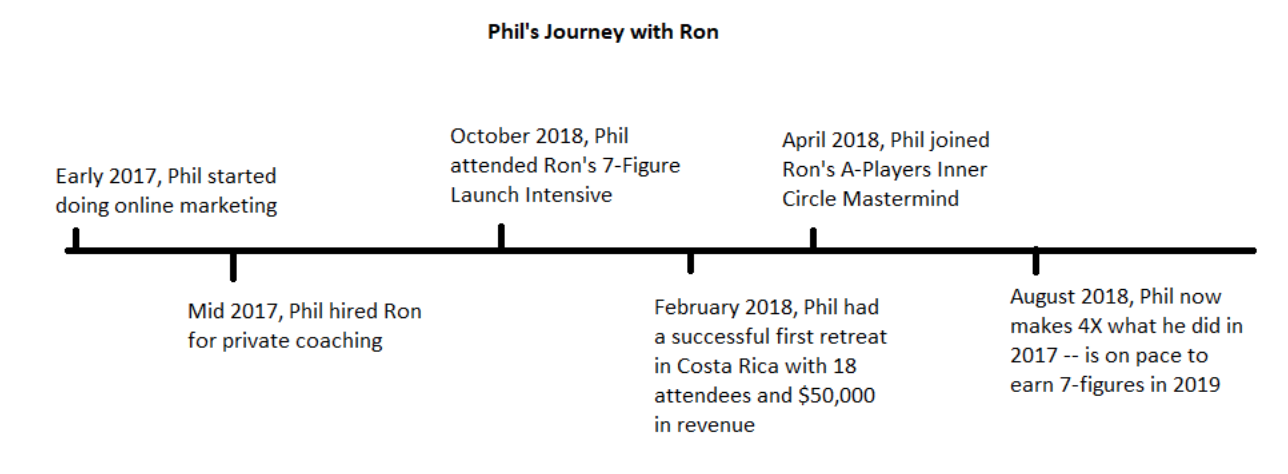
 Phil’s retreat in Costa Rica
Phil’s retreat in Costa Rica Phil and his wife Janice in Costa Rica
Phil and his wife Janice in Costa Rica Phil, and 17 other A-Players at Ron’s Mastermind in Medellin
Phil, and 17 other A-Players at Ron’s Mastermind in Medellin

 But they weren’t done there.
One of the next things they worked on was fixing Luisa’s high-ticket offer.
In the past, Luisa sold a one-on-one coaching upsell for $10,000.
But she hardly promoted it. It was just tacked on to her main sales page as an afterthought.
So Ron showed her how to use his special “High-Ticket Upsell Sequence”.
A week after buying, her customers would get an email showing them the value of one-on-one coaching.
Simply setting this up was a big confidence boost for Luisa.
But they weren’t done there.
One of the next things they worked on was fixing Luisa’s high-ticket offer.
In the past, Luisa sold a one-on-one coaching upsell for $10,000.
But she hardly promoted it. It was just tacked on to her main sales page as an afterthought.
So Ron showed her how to use his special “High-Ticket Upsell Sequence”.
A week after buying, her customers would get an email showing them the value of one-on-one coaching.
Simply setting this up was a big confidence boost for Luisa.
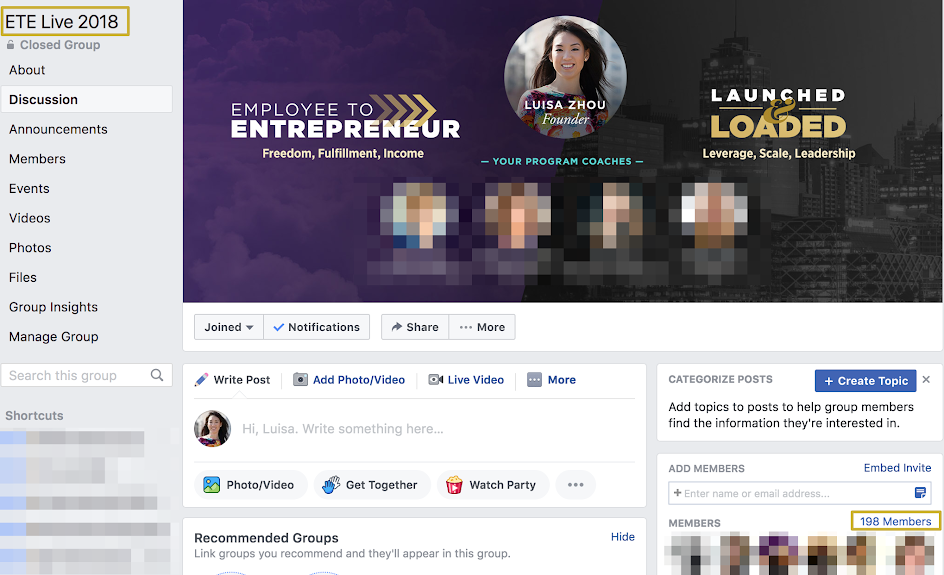


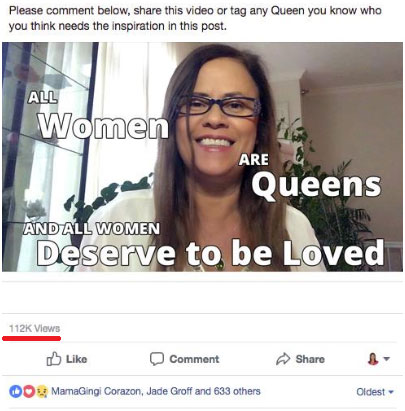



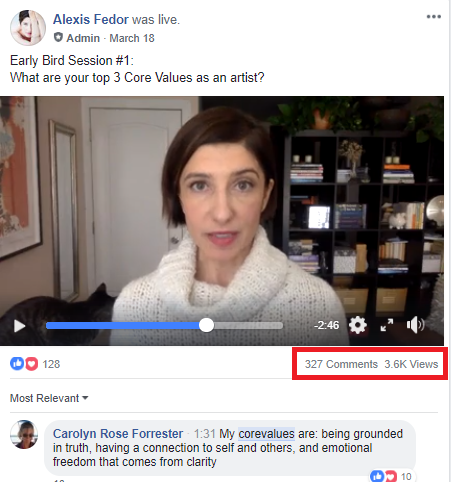
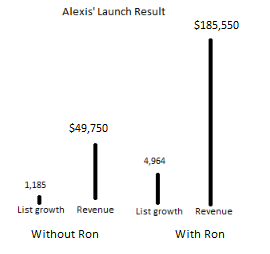


 Using this strategy, as well as a few others, Selena ended up with 170 affiliates for her launch.
Using this strategy, as well as a few others, Selena ended up with 170 affiliates for her launch.
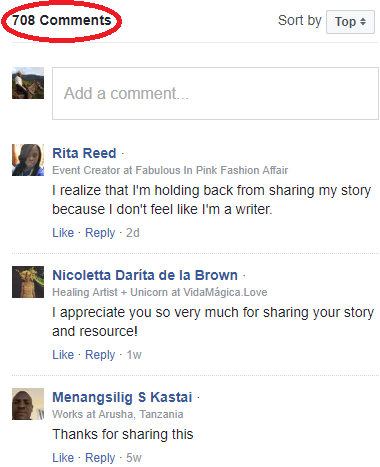 Selena’s pre-launch videos got over 700 positive comments.
Selena’s pre-launch videos got over 700 positive comments.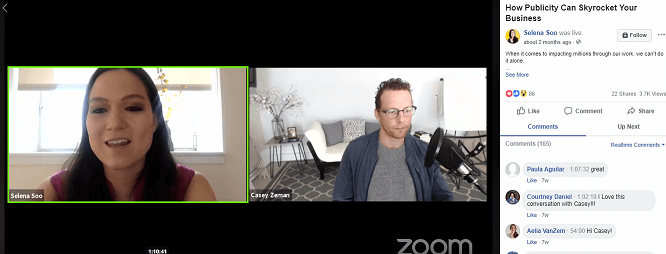
 Now that she scaled her reach and revenue, Selena is focused on finding new ways to serve her customers.
She’s working on new programs to help them hit even higher levels.
Now that she scaled her reach and revenue, Selena is focused on finding new ways to serve her customers.
She’s working on new programs to help them hit even higher levels.
